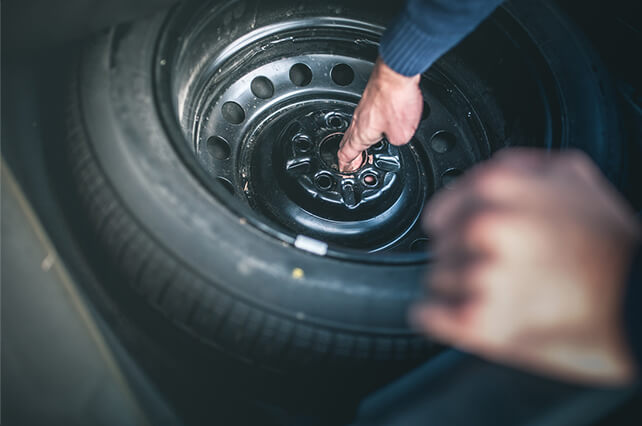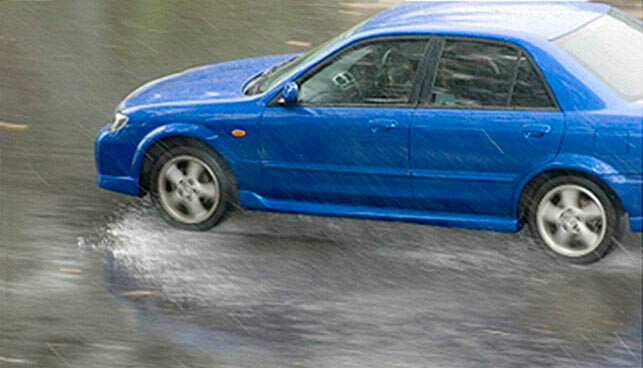Driving Tips
Using Your Spare
Most vehicles come equipped with a temporary spare. These tires are usually much smaller than the other tires on your car. It is important to realize that these spares have far more limitations than a typical tire, including speed and recommended driving distance. Some spare tires even require the use of a special canister to inflate the tire. You should familiarize yourself with the spare by reading the owner's manual and the sidewall of the spare. And remember, check the air pressure of the spare frequently.

Hydroplaning
Three main factors contribute to the loss of traction on wet roads known as hydroplaning:
- Vehicle speed. As speed increases, wet traction is considerably reduced.
- Water depth. The deeper the water, the sooner you will lose traction, although even thin water layers can cause a loss of traction, even at low speeds.
- Tire tread depth. As your tires become worn, their ability to resist hydroplaning is reduced.
- Since hydroplaning can result in a complete loss of traction and vehicle control, you should always reduce speed with consideration to the traffic around you.

Driving on Ice and Snow
All-season tires are designed to provide higher levels of snow traction than non-all-season tires. You have all-season tires if you find the letters "M+S" molded into the sidewall near the bead. These letters mean "Mud and Snow." Even the best all-season tires will not provide acceptable levels of traction if you drive too fast in snow/ice conditions, and if you do not allow at least 12 times more stopping distance on wintry roads.

For Safe Winter Driving
- Reduce your speed. Even good road conditions can deteriorate quickly.
- Increase your stopping distance - at least 12 times more than on dry roads. You may not always need that much distance, but when you do, you'll be glad you were playing it safe.
- Check the condition of your tires. Worn tires provide less grip.